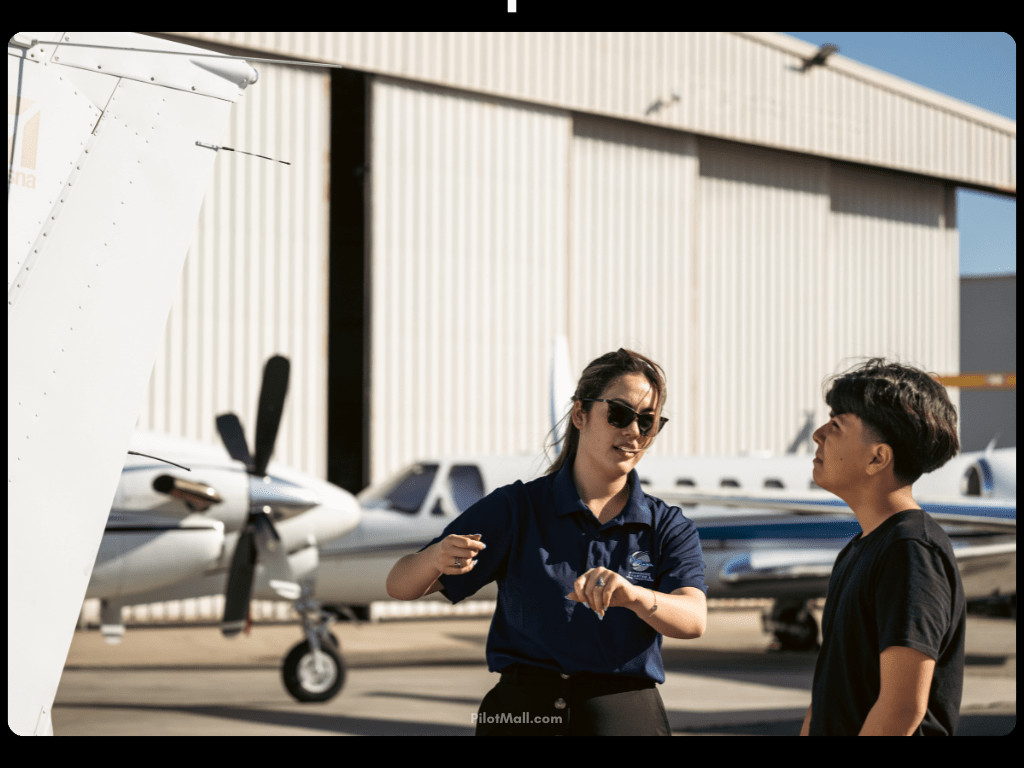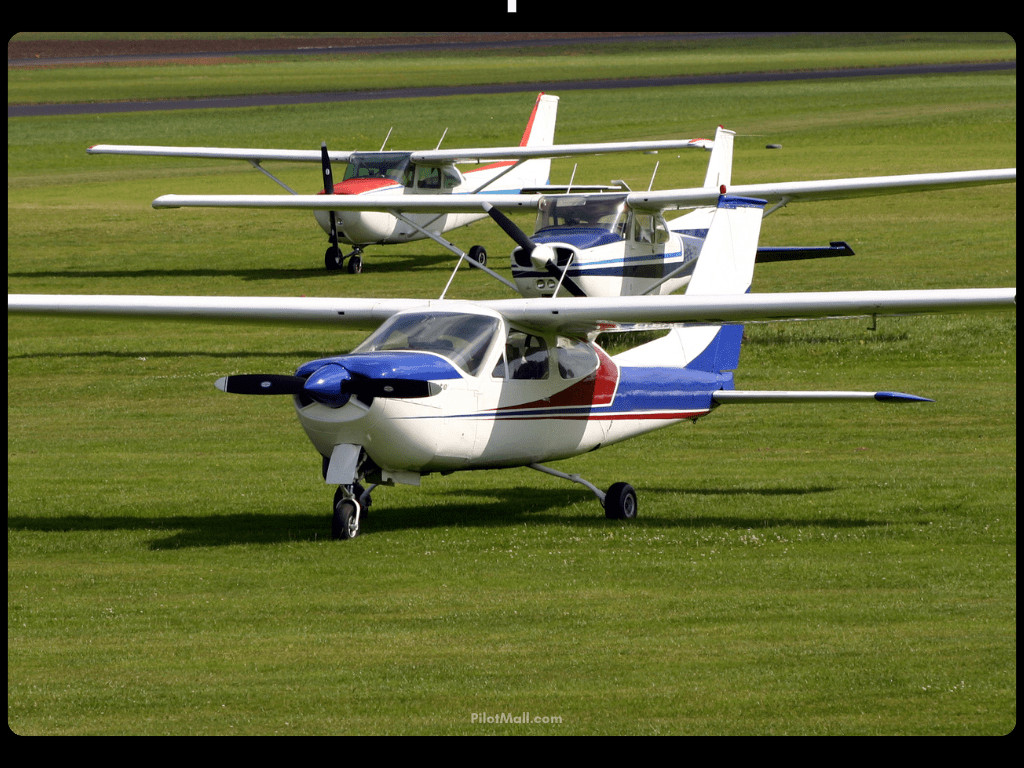Is Flying Hard? Yes, learning to fly can be challenging, but it’s achievable with dedication and the right resources. Flyermedia.net offers a wealth of information to help aspiring pilots navigate the complexities of flight training and the aviation industry, providing resources on everything from flight schools to aircraft handling. You’ll gain the knowledge and skills to conquer the skies, learning to fly an aircraft safely while staying abreast of aviation regulations.
1. What Factors Determine How Hard Flying a Plane Is?
The difficulty of flying a plane isn’t a fixed concept; it varies depending on several elements. A beginner pilot might view it as more challenging, while an experienced pilot may find it easier. The perceived difficulty also hinges on the type of flying involved, such as navigating a small local airport versus managing a commercial airliner in a busy terminal. So, several factors come into play when it comes to the perceived difficulty of flying a plane: the pilot’s experience, the flying conditions, and the type of aircraft.
2. What are the Stages of Learning to Fly, and How Does the Perceived Difficulty Change?
Learning to fly a plane follows four distinct stages, each affecting how challenging you perceive flying to be:
2.1. Unconscious Incompetence: The Beginning
At this stage, you’re unaware of what you don’t know. You might underestimate the complexities of flying, thinking it won’t be too difficult. This initial optimism can lead you to believe flying isn’t too hard.
2.2. Conscious Incompetence: Facing the Reality
As you start training, you realize how much you need to learn. This awareness can be daunting, and your confidence might dip. During this phase, flying can seem extremely challenging.
2.3. Conscious Competence: Mastering the Skills
Nearing the end of your flight training, you’ve learned the necessary skills and knowledge. You can fly a plane competently, but it requires focus and effort. At this stage, you might find flying still somewhat hard, but you’re confident in your abilities.
2.4. Unconscious Competence: The Ultimate Goal
This final stage is achieved through extensive practice. Skills become automatic, and you can perform them without thinking. At this point, flying feels easy. You’ve become so skilled that the complexities fade into the background.
 Flight instructor teaching student
Flight instructor teaching student
3. How Do External Factors Affect the Difficulty of Flying a Plane?
Beyond your training, external conditions significantly impact how hard flying a plane feels on any given flight:
3.1. Type of Plane
Trainer aircraft like the Cessna 150, 152, and 172 are designed for easier handling. These planes are more stable and forgiving, making them ideal for student pilots. Transitioning to aircraft with more demanding characteristics can make flying seem harder. Flyermedia.net provides details of common student pilot trainer aircraft.
3.2. Weather Conditions
Clear, calm weather makes flying much easier compared to turbulent, low-visibility conditions. As lludwig39 noted, flying in ideal weather is vastly different from navigating challenging conditions. Unfavorable weather can significantly increase the difficulty. Flyermedia.net keeps you updated with real-time flight conditions.
3.3. Flight Characteristics
Altitude plays a key role. Maintaining heading, altitude, and speed at cruising altitude is less stressful than dealing with lower altitudes where quick reactions are needed. Congested airspace and complex airports also add to the challenge.
4. Why is Learning to Fly a Plane Harder Than Learning Other Skills?
Flying a plane presents unique challenges compared to driving or other skillsets, primarily due to:
4.1. Mastering the Third Dimension
Driving involves operating in two dimensions (forward/backward, left/right), while flying requires mastering movement in the vertical dimension as well. Managing the X, Y, and Z axes simultaneously increases the complexity.
4.2. Limited Margin for Error
Unlike many skills where mistakes are recoverable, errors in flying can have severe consequences. As pilot Andrew Hennigan points out, “In flying there is no try; you have to be sure all the time.” The need for constant precision and awareness elevates the difficulty.
5. What is the Hardest Part of Flying a Plane for Most Pilots?
Ask most pilots, and they’ll say the hardest part of flying is landing. Landing combines the need to master the third dimension with the critical requirement of operating within a narrow margin for error. Factors like vector, speed, and unexpected crosswinds must align perfectly for a successful landing. Remember, a go-around is always an option if conditions aren’t right. Your instructor will teach you how to land a plane safely and confidently.
 Small aircraft landing
Small aircraft landing
6. What Kind of Career Opportunities Await Pilots in the USA?
Becoming a pilot unlocks various career opportunities in the United States. Commercial pilots can fly for major airlines, regional carriers, or cargo companies. Corporate pilots fly private jets for businesses, while charter pilots offer on-demand air transportation. Other options include flight instruction, aerial photography, and agricultural aviation.
7. How Can Aspiring Pilots Choose the Right Flight School in the USA?
Selecting the right flight school is crucial for a successful aviation career. Consider factors like accreditation, the quality of instructors, aircraft availability, and the school’s safety record. Look for schools that offer structured training programs and a supportive learning environment. Visit several schools, talk to current students, and take introductory flights to find the best fit.
8. What are the Essential FAA Regulations That Every Pilot Needs to Know?
Pilots must adhere to Federal Aviation Administration (FAA) regulations to ensure safety and compliance. Key regulations cover pre-flight preparation, aircraft maintenance, medical certification, and flight operations. Understanding airspace classifications, weather minimums, and emergency procedures is also vital. Stay updated with the latest regulations through FAA publications and training courses.
9. How Does Technology Impact Modern Aviation and Pilot Training?
Technology has revolutionized aviation, enhancing safety, efficiency, and training. Glass cockpits, GPS navigation, and advanced autopilot systems have become standard. Flight simulators provide realistic training environments for pilots to practice various scenarios. Electronic flight bags (EFB) replace paper charts and manuals, offering pilots access to real-time information. Continuous advancements in technology improve the overall flying experience.
10. What are Some Common Misconceptions About Flying That People Should Know?
Several misconceptions about flying can deter potential pilots. One common myth is that you need to be a mathematical genius to fly. While some technical knowledge is required, anyone with a good aptitude for learning can succeed. Another misconception is that flying is too expensive. While it requires an investment, financing options and scholarships are available. Don’t let these myths hold you back from pursuing your dream of flying.
11. What is the Role of Continuing Education in Maintaining Pilot Proficiency?
Continuing education is essential for pilots to stay proficient and current with industry changes. Regular flight reviews, recurrent training, and advanced courses help pilots refine their skills and knowledge. Staying informed about new technologies, regulations, and best practices ensures pilots maintain a high level of safety and professionalism throughout their careers.
 Three Cessna planes on the grass
Three Cessna planes on the grass
12. How Can I Stay Updated with the Latest Aviation News and Trends in the USA?
Staying informed about aviation news and trends is vital for pilots and aviation enthusiasts. Follow reputable aviation news websites, subscribe to industry publications, and attend aviation events and conferences. Joining pilot associations and online forums can also provide valuable insights and networking opportunities. Flyermedia.net keeps you updated on news and trends in the industry.
13. What Resources Does Flyermedia.net Offer for People Interested in Aviation?
Flyermedia.net is your go-to resource for all things aviation. Whether you’re seeking flight school directories, pilot career guides, or aviation news, our website offers a wealth of information. Our user-friendly interface and expert content make it easy to explore the world of aviation and stay updated on industry trends. Visit Flyermedia.net today and take the first step towards your aviation journey.
14. How Do Weather Patterns and Climate Change Impact Flight Planning and Safety?
Weather patterns play a crucial role in flight planning and safety. Pilots must carefully assess weather conditions before each flight, considering factors like wind, visibility, and temperature. Climate change is also impacting aviation, leading to more frequent and severe weather events. Understanding these changes and adapting flight planning accordingly is essential for safe operations.
15. What Emergency Procedures Should Every Pilot Know and Practice Regularly?
Pilots must be prepared for emergencies by knowing and practicing essential procedures. These include engine failure, fire, electrical malfunctions, and loss of control. Regular simulator training and emergency procedure drills help pilots react effectively in critical situations. Familiarity with the aircraft’s emergency equipment and procedures can significantly improve outcomes.
16. How Important is Mental and Physical Well-being for Pilots?
Maintaining mental and physical well-being is crucial for pilots. Stress, fatigue, and health issues can impair judgment and reaction time. Pilots should prioritize adequate rest, healthy eating, and regular exercise. Mental health support and stress management techniques are also essential for maintaining peak performance.
17. What Role Does Communication Play in Ensuring Flight Safety?
Effective communication is paramount for flight safety. Pilots must communicate clearly and concisely with air traffic control, crew members, and passengers. Using standard phraseology and following established protocols minimizes misunderstandings. Open communication and teamwork promote a safe and efficient operating environment.
18. How Do Technological Advancements in Air Traffic Control Improve Flight Operations?
Technological advancements in air traffic control (ATC) have significantly improved flight operations. Radar systems, automated surveillance, and data communication networks enable ATC to manage air traffic more efficiently. Modern ATC systems enhance safety, reduce delays, and optimize airspace utilization. Continuous upgrades and innovations in ATC technology ensure a safer and more efficient aviation system.
19. What are the Best Practices for Pre-Flight Planning to Ensure a Safe Flight?
Thorough pre-flight planning is essential for a safe flight. Pilots should review weather conditions, check aircraft maintenance records, calculate performance data, and plan the route carefully. Ensuring all required documents and equipment are on board is also crucial. A well-prepared pilot is better equipped to handle unexpected challenges and ensure a smooth flight.
20. How Do International Aviation Regulations Differ from Those in the USA?
International aviation regulations can vary from those in the USA. The International Civil Aviation Organization (ICAO) sets global standards, but individual countries may have additional requirements. Pilots flying internationally must familiarize themselves with the regulations of each country they will operate in. Understanding these differences is essential for compliance and safe international flight operations.
21. What Are the Ethical Responsibilities of Pilots to Passengers and the Public?
Pilots have significant ethical responsibilities to passengers and the public. They must prioritize safety, adhere to regulations, and act with integrity. Transparency and honesty in communication are also crucial. Upholding ethical standards ensures trust and confidence in the aviation industry.
22. How Can the Aviation Industry Attract and Retain More Young People?
Attracting and retaining young people in the aviation industry requires innovative strategies. Offering scholarships, promoting STEM education, and highlighting diverse career paths can spark interest. Creating mentorship programs, providing growth opportunities, and fostering a positive work environment are essential for retaining talent. Showcasing the excitement and rewards of aviation can inspire the next generation of pilots and aviation professionals.
23. What are the Emerging Trends in the Development of Sustainable Aviation Fuels?
Sustainable aviation fuels (SAF) are gaining prominence as a solution to reduce aviation’s environmental impact. Emerging trends include the development of fuels from biomass, algae, and waste materials. Technological advancements in biofuel production and certification are also driving progress. Incentives and policies that support SAF development can accelerate the transition to a more sustainable aviation industry.
24. How Can Technology Help Reduce Human Error in Aircraft Maintenance?
Technology plays a crucial role in reducing human error in aircraft maintenance. Digital records, automated inspections, and predictive maintenance tools enhance accuracy and efficiency. Virtual reality training and augmented reality tools provide technicians with realistic and interactive learning experiences. By leveraging technology, the aviation industry can minimize errors and improve aircraft safety.
25. What is the Future of Urban Air Mobility and Its Impact on Transportation?
Urban air mobility (UAM) is poised to revolutionize transportation in cities. Electric vertical takeoff and landing (eVTOL) aircraft are being developed for passenger and cargo transport. UAM promises to reduce traffic congestion, improve travel times, and provide convenient on-demand air services. As technology advances and infrastructure develops, UAM will transform the way people move in urban environments.
26. What Strategies Can the Aviation Industry Implement to Enhance Cybersecurity?
Cybersecurity is a growing concern in the aviation industry. Strategies to enhance cybersecurity include implementing robust data protection measures, conducting regular security audits, and training personnel on cyber threats. Collaborating with cybersecurity experts and sharing threat intelligence is also essential. Protecting aviation systems from cyberattacks ensures the safety and integrity of air operations.
27. How Do Advancements in Satellite Technology Improve Navigation and Communication?
Advancements in satellite technology have significantly improved navigation and communication in aviation. Global Navigation Satellite Systems (GNSS) provide accurate positioning and navigation data. Satellite communication systems enable reliable voice and data communication between aircraft and ground stations. Enhanced satellite capabilities support safer and more efficient flight operations worldwide.
28. What Measures Can Be Taken to Mitigate the Risk of Bird Strikes in Aviation?
Bird strikes pose a significant risk to aviation safety. Measures to mitigate this risk include implementing wildlife management programs at airports, using radar systems to detect bird movements, and modifying aircraft designs to reduce the impact of bird strikes. Educating pilots about bird strike avoidance techniques is also crucial. A comprehensive approach can minimize the risk and protect aircraft and passengers.
29. How Can the Aviation Industry Prepare for Future Pandemics and Health Crises?
The aviation industry must prepare for future pandemics and health crises. Implementing robust health screening protocols, enhancing aircraft cleaning and disinfection procedures, and developing flexible travel policies are essential. Collaborating with health organizations and sharing best practices can improve preparedness. Investing in research and technology to detect and contain infectious diseases is also crucial for ensuring public safety.
30. What Role Does Human Factors Research Play in Enhancing Flight Safety?
Human factors research plays a critical role in enhancing flight safety. By studying human performance, behavior, and limitations, researchers can identify factors that contribute to errors and accidents. Applying human factors principles in aircraft design, training programs, and operational procedures can improve safety and reduce the risk of human error.
Frequently Asked Questions
How hard is it to fly a commercial plane?
As a pilot’s skill and experience improve, they will experience more ease with operating the aircraft they’re rated in.
What is the most difficult part of flying a plane?
The most difficult part of flying is not the flight portion, it’s the landings. The next most difficult part of flying is safety assessments, such as resisting the urge to fly in bad weather conditions due to needing to be somewhere at a certain date or time.
How long does it take to learn to fly a plane?
This depends on the student pilot’s personal ability to comprehend the materials and to perform tasks in the aircraft with proficiency.
Is it scary to fly on a plane for the first time?
They say fear often comes from a lack of understanding and experience. Taking a discovery flight can help to increase awareness, understanding, and alleviate fear of the unknown.
Do you need a degree to be a pilot?
As of recently, you do not need a degree to go into the airlines; however, having a degree makes one applicant more likely to be hired than one who doesn’t have a degree. A pilot will still need to meet the FAA requirements for ATP with the appropriate amount.
What are the easiest planes to fly?
Small general aviation aircraft such as small single-engine Cessna’s and Piper’s tend to be easier to fly.
What kind of math do pilots need to know?
Pilots need to be proficient in basic arithmetic, algebra, and geometry to calculate fuel consumption, distances, and altitudes.
What is the average age to become a pilot?
The average age to become a pilot varies, but many start training in their late teens or early twenties. There is no upper age limit, but pilots must meet certain medical requirements.
What is the most stressful part of being a pilot?
The most stressful parts of being a pilot include dealing with emergencies, managing unexpected weather conditions, and ensuring the safety of passengers and crew.
How much does it cost to get a pilot license?
The cost to get a pilot license varies depending on the type of license and flight school, but it typically ranges from $10,000 to $20,000 or more.
Final Thoughts
If you’re wondering, “Is flying hard?” remember that anything worthwhile takes effort. If you’re passionate about becoming a pilot, don’t let the perceived difficulty hold you back. With determination and the right resources, you can achieve your dreams. Visit flyermedia.net to explore flight training options, read aviation news, and discover career opportunities in the USA. Contact us at Address: 600 S Clyde Morris Blvd, Daytona Beach, FL 32114, United States or Phone: +1 (386) 226-6000. The sky’s the limit!
|  Airplane Flying Handbook |
Airplane Flying Handbook |
Airplane Flying Handbook The FAA Airplane Flying Handbook is a complete resource for student pilots, pilots, instructors, and aviation specialists, featuring information on every essential topic in the aviation field. The topics covered include: ground operations, basic flight maneuvers, performance maneuvers, upset prevention and recovery, night operations, and emergency procedures. |
|—|—|
